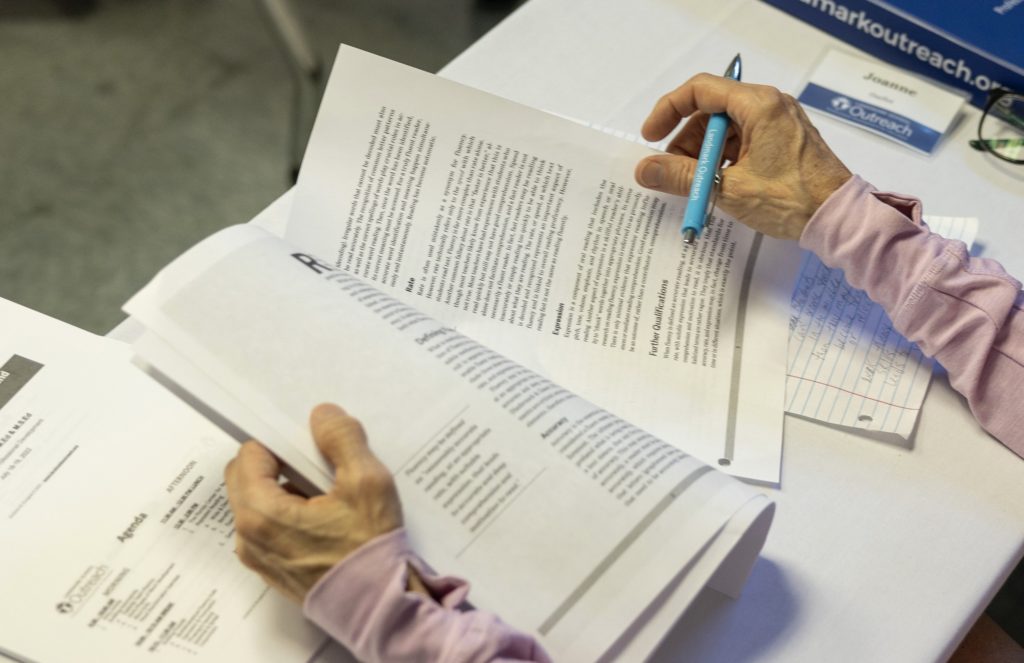A Plug for Handwriting
In the digital age, many people consider handwriting to be an antiquated form of communication. The emphasis on handwriting decreases as students get older, and many places do not require direct instruction in letter formation past the first grade, instead shifting the focus to keyboarding. Although typing skills are also critical to literacy, it has been shown that handwriting practice and instruction is key in the development of not only writing skills, but also reading and study skills.
Karin H. James and Laura Englehard published research in 2012 asserting that letter formation through the act of handwriting activates areas of the brain that can help reading acquisition in children. They also found that handwriting letters helps children recognize and rapidly name letters, which is an essential skill in learning to read (James and Englehard, 2012). Their research also revealed that handwriting helps students contextualize the variability in print which then leads to “enhanced letter identification skill” (James and Engelhard, 2012).
Although every student can benefit from handwriting instruction and practice, focus and attention on letter formation is especially necessary for students who are diagnosed with SLD, like dyslexia or dysgraphia. Often students with SLD write more slowly and less clearly than their peers. In an effort to help students record information quickly and legibly, educators often suggest that they type content. While typing is sometimes an excellent and well-meaning strategy, not supporting students’ handwriting development can impact other areas of learning.
There is much overlap between the impact of reading difficulty and handwriting difficulty. When a student struggles with decoding, they may experience decreased comprehension because they are using too much of their mental output to decipher the individual words. Handwriting difficulty can have a similar impact. Like reading, if a student is expending too much cognitive energy on forming the letters, there is often no bandwidth left to think about what they want to say and how they want to say it.
It is noted that students who struggle to pick up handwriting and who don’t get the needed extra practice can fall behind their peers in many areas of academic proficiency. A white paper: “Handwriting in the 21st Century” published by Saperstein Associates and Zaner-Bloser surmised that lack of effective practice and exposure results in gaps in learning that make “an inequity regarding students’ access to a skill that lays the groundwork for academic achievement” (2012).
Thus, it is essential for students with SLD to receive direct instruction and practice in handwriting. Additional evidence from this 2012 white paper asserted that students’ writing quality, quantity, and speed have been shown to improve if handwriting is explicitly taught, and this can directly support reading acquisition (Handwriting in the 21st Century, 2012). Additionally, when handwriting becomes automatic, students can better focus on the planning and thought organization that is required for effective composition.
In middle school and secondary school, there is much less focus on handwriting, and students are often encouraged to type most of their work. Although typing work at this age is an important and necessary skill, handwriting should not be forgotten. Educators are encouraged to find chances to encourage students to handwrite. Think about having students handwrite notes and then type them up as an exercise for studying for a test. Have students handwrite brainstorms, thesis statements, and rough outlines for papers, or even compose handwritten paraphrases of important information to reinforce their understanding of what was read.
References
- James, K. H., & Engelhardt, L. (2012). The effects of handwriting experience on functional brain development in pre-literate children. Trends in neuroscience and education, 1(1), 32–42. https://doi.org/10.1016/j.tine.2012.08.001
- Handwriting in the 21st century? Zaner-Bloser. (n.d.). Retrieved October 25, 2021, from https://media.zaner-bloser.com/hw21summit/public/files/H2948_HW_Summit_White_Paper_eVersion.pdf.



